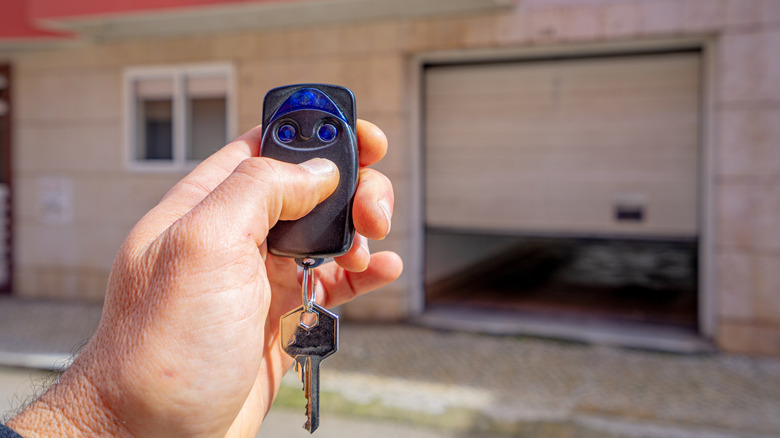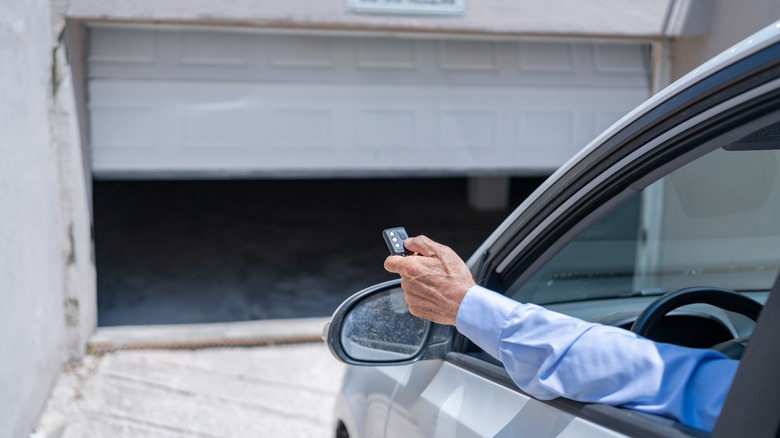Garage Door Opener Not Working? Your Lights May Be To Blame
Because of the functionality and convenience it provides, a garage door opener is one of the most useful appliances for the home. A garage door opener eliminates the need for homeowners to physically lift large doors due to its automated mechanism, allowing it to be opened or closed with a single button. These automatic openers are especially useful for people with disabilities or when there is bad weather and you don't want to get out of the car. There are, however, common problems with garage door openers that cause them not to work properly, but one surprising reason might be nearby installed lighting.
Lights near a garage can sometimes cause a garage door opener to malfunction due to radio interference from the electrical components of both LED and fluorescent lights. For LED lights, electromagnetic interference (EMI) is normally a result of poor build quality or shielding. This interference can then affect the very high frequency (VHF) radio band, normally used by communication devices and radios. For fluorescent lighting, the interference may be caused by the electrical ballast and the arc discharge inside the lightbulb, which interferes with and intercepts VHF or Ultra High Frequency (UHF) radio frequencies.
Garage door openers normally operate between 300 MHz and 390 MHz, which is in the UHF range. This can then conflict with the 30 to 300 MHz frequency of LED light circuits, or receive interference from fluorescent lights. If the light sources in a house are emitting radio interference, it can cause the remote to malfunction or have a reduced range due to the impeded signals between the opener and the remote. Options to remedy this include using ferrite beading on the wiring of the opener, changing to better shielded lighting, and separately wiring the lighting and the opener.
How to diagnose and fix garage door opener interference issues
Before spending money on costly garage door repair, which could cost up to $900, you should investigate potential sources of the problem. This can be done by testing the remote functionality, initially at close range and gradually moving further away. If the remote works when it is near the garage door but ceases to function when further away, it is likely that there is radio interference. Next, to find other potential sources of interference, power off devices such as internet routers, LED or fluorescent lights, and cordless phones, and use the remote after each device is turned off to eliminate possible sources one at a time.
Aside from removing radio interference, connectivity issues can be addressed by checking the antenna's condition or if anything is blocking it. Another possible fix is to reset the connection by using the learn button on the control panel, motor, and remote control of the opener, pressing it for at least 20 seconds, and repeating this process for the same button on the remote. Further to this, powering off the garage door opener by disconnecting it or shutting off the circuit breaker may also help, as this also resets and reconfigures the connection with the remote. Lastly, simply replacing the battery on the remote can also fix connection issues, as weak batteries affect signal strength.
Along with their practical function, garage door openers are important for home security, which is one of the reasons for their growing popularity. Oftentimes, problems with the opener can be addressed with simple DIY fixes, but for more complex issues, it's best to seek professional repair services. Finally, to maintain the opener's proper function and good condition, it's essential to clean and lubricate its springs regularly.

